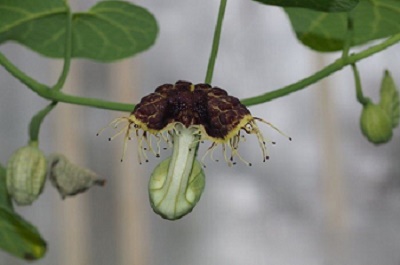Aristolochia Aristolochia fimbriata
| Genus | Aristolochia |
|---|---|
| Species | Aristolochia fimbriata |
| Chromosome number | 2n=2x=14 |
| Common Name | Aristolochia debilis |
| Distribution | Brazil, Paraguay, Bolivia, Uruguay, Argentina, Colombia, Ecuador |
| Description |
|
| Organism Image |  |






